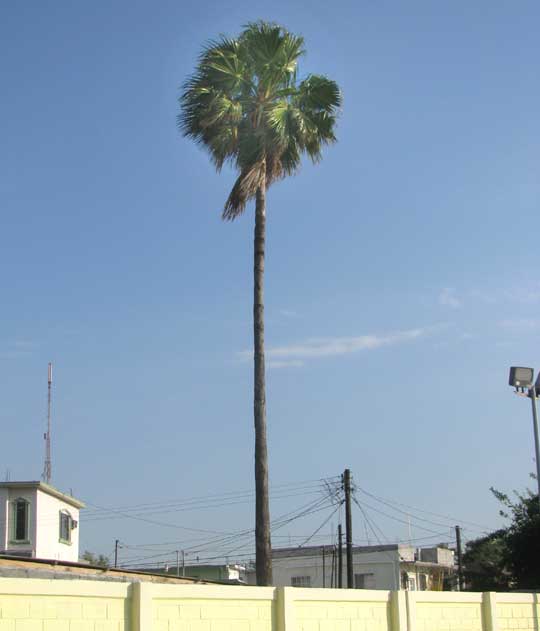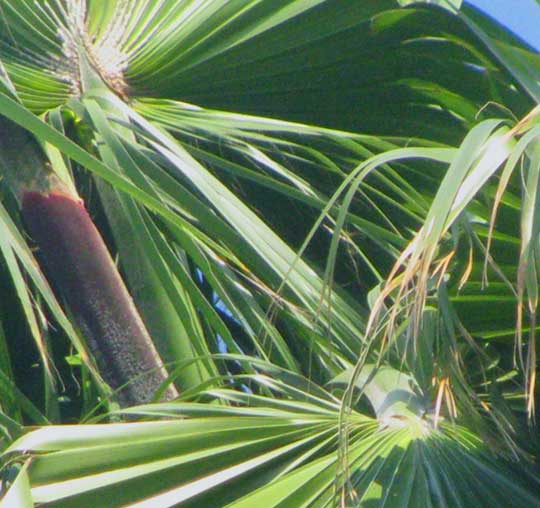Excerpts from Jim Conrad's
Naturalist Newsletter
from the April 1, 2012 on-the-road Newsletter based on notes and pictures from Matamoros, Tamaulipas, MÉXICO
BROOM PALM ON THE BORDER
Wednesday morning I awoke entering Matamoros, state of Tamaulipas, northern Mexico, the town across the Rio Grande from Brownsville, Texas. Lately there'd been drug-gang shooting in the town so I didn't walk around the way I used to, just stayed in the station until my bus across the border left at 9AM. The only naturalizing I did was to admire the palm rising just beyond the tall wall around the bus compound, shown below:

That's a fan palm, not a species with fronds pinnately divided, or "featherlike," like a Coconut Palm's fronds. Back in the Yucatán we had two very common fan palms, so was this one of those?
The Yucatán's fan palms can be distinguished from one another by noticing whether the frond petioles abruptly end where they attach to the blade, or continue on up into the blade, diminishing and curling as they go. To see what the petioles of this fan palm did I zoomed in on a spot and got what's shown below:

In that picture at the top, left you see the bottom of a frond where the petiole for a very short distance slices into the blade, not gradually diminishing and not curling. At the bottom right you see the same but viewed from the top of the frond. There the petiole ends all at once, with two low ridges forming a shallow V between the petiole and the radiating leaflets.
So, this is like the Yucatán's Chit Palm, Thrinax radiata, which similarly has abruptly ending petioles. Our nicely illustrated Chit Palm page is at www.backyardnature.net/yucatan/chitpalm.htm.
But, is this Matamoros palm the Chit? The shallow-V-forming ridges where the petiole attaches to the frond on the upper surface prove that it isn't. In the second picture on our Chit Palm page you can see that that frond has a very prominent, toothlike projection sticking straight up from the frond's surface. That's called the "hastula," and in distinguishing species of the genus Thrinax it's a very helpful field mark because it comes in many shapes and sizes among the species. Our Matamoros palm's hastula is nothing like the Chit's.
Since they might have come from anywhere on Earth, it's hard to identify planted palms. However, largely on the basis of the hastula shape and the fact that the species is listed as growing in the Lower Rio Grande Valley, I'm calling our Matamoros palm THRINAX PARVIFLORA, variously known in English as the Broom Palm, Thatch Palm, and Mountain Thatch Palm.
It's endemic to Jamaica but increasingly planted throughout the tropics.